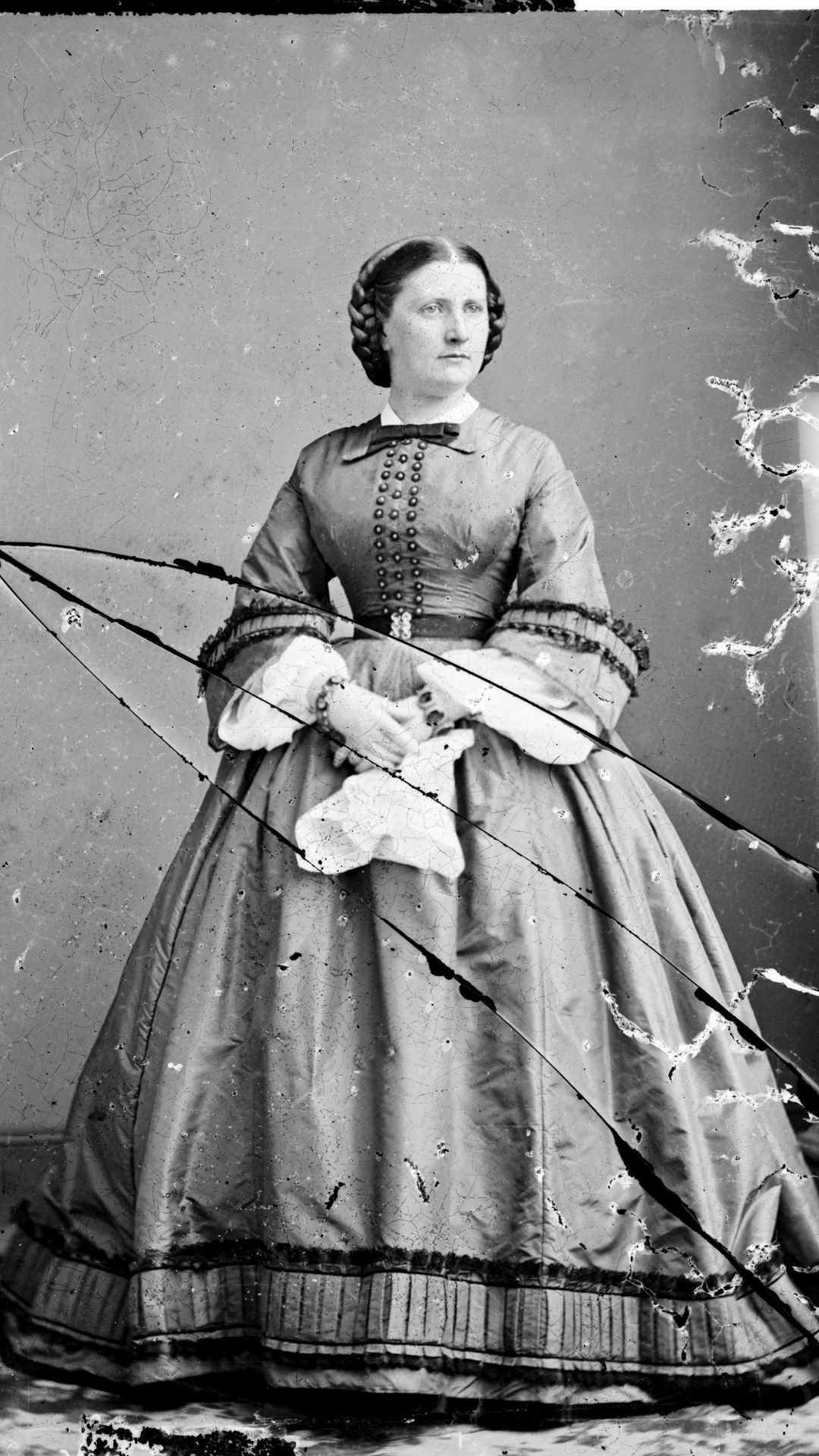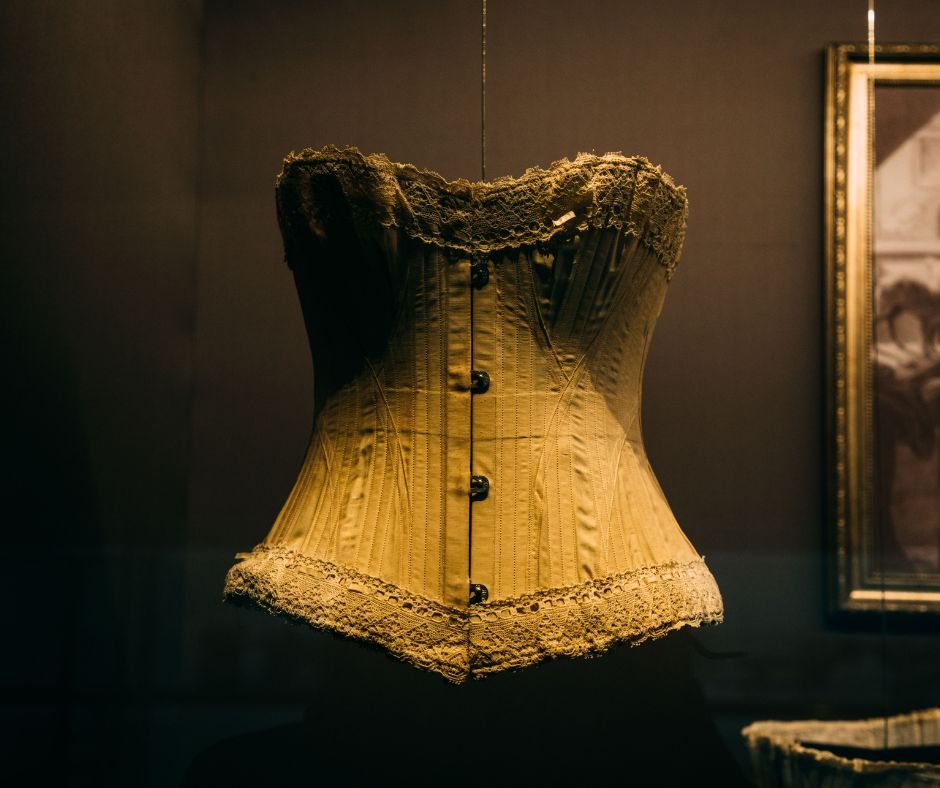By Clara Carlson
Wartime has always been difficult on Fashion and the American Civil War was no exception. Basic survival during a time of both economic and personal insecurity, created an atmosphere where women were forced to change their views on dress and fashion in general. The silhouettes changed drastically during this time.
photo courtesy of unsplash.com
The 1860s saw the emergence of the both the hoop skirt along with more practical clothes. These were just two of the ways that women wore dresses. However, these aren't the only changes that were made to the way they wore their clothing.
How Did the Civil War Affect Clothing?
Women's clothing was a topic rarely mentioned during the Civil War, but it suffered an enormous impact. Southerners were forced to adapt to a new fashion culture.
When the war broke out in spring 1861, Southerners had already made remarkable advances in industrial production. In particular, the South's agriculturally-based economy had been humming along as a result of a record cotton crop.
Women began to assume leadership roles, especially on the home front. They took on household duties, tended the farm, and even did traditional men's work like planting and harvesting. They also banded together to produce clothing for the troops. This included making shirts out of animal skins and old clothes, and knitting them. This meant they were wearing simple, practical dresses made from breathable fabrics like wool and cotton. They had fewer opportunities to wear grand silk gowns as Balls were held much less often during wartime, when men were off fighting.
Because women had less access to new fabrics, they often had to adapt their current clothing to more fashionable looks. This could be achieved by changing the neckline or sleeves; adding or subtracting lace or trims. They might also use fabrics from around the house to create something new. Some of you might remember the famed scene from the film, Gone with the Wind, when Scarlett uses velvet curtains to create a gown to wear to visit Rhett.
Women also led efforts to bury and memorialize the dead. Many women also took on nursing duties for the wounded. While some of the women who participated in the war were lucky enough to get jobs, most others were left to support their families.
Mourning Dresses During Civil War
The Civil War brought with it many widows, both young mothers and grandmothers. Widows were expected to wear black clothing for two years or more. As the war progressed, the trend for mourning dresses expanded to include infants and children.
The Victorian Age saw strict cultural expectations for women. They were expected to wear modest dresses. Crepe, a heavy fabric made from highly spun silk or wool fibers, was the material of choice for mourning clothes. Widows were required to wear a black veil when they left their homes.
Mourning dresses were also expensive. Some European merchant families were able to afford a version of court mourning dresses which were very elaborate. Because of wartime, however, most of these garments were very simple and practical.
Hoop Skirts During Civil War
Typical women's fashion of the 1860s consisted of a skirt and bodice. Often, the skirt was very full and the bodice was close-fitting. For more economical purposes, dresses often came with a jacket or more modest bodice that could be worn during the day or outside and an additional less modest bodice with a lower neckline and shorter sleeves, that could be paired with the same skirt, to create an evening look.
Among the most popular pieces of fashion were hoop skirts. These support devices were made of thin steel bands and were worn under several petticoats with a skirt on top. They varied in size, but some measured 122" around the bottom. Initially, they were only available to the rich. Eventually, the hoop skirt was mass-produced and became affordable for lower class women. However, the hoop line was not as grand in comparison. Hoops were generally worn only for more formal occasions as they were not very practical.
Corsets in Virginia during Civil War
When the Civil War erupted in the southern United States, women's clothing changed drastically. The blockade of the South's ports cut off trade with the North, and women had to make do with what they had. In addition, the inflation of the economy slowed down supply.
Contrary to popular belief corsets, when fit correctly, are not painful. Sometimes Victorian Corsets are even comfortable and can help with posture. They were made to support the heavy skirts of the gown and create a certain silhouette for the body. Corsets were often made of stiff cotton, and incorporated a busk as well as whale bone or baleen in channels to stiffen it’s shape further. The hourglass shape of the body was a bit of an illusion. The small waist was created in part with a corset but more emphasized with very large skirts and full sleeves.
Practical Clothes
The blockade of Southern ports cut off trade with the North. This limited the supply of fabric. Fabrics were mainly made by northern textile mills. As a result, women on both sides of the war had to use fabric on hand or woven themselves and clothing became more practical. Most milled fabrics need to be used for Military UniformsDuring the war, women wore lighter colors and fewer elaborate dresses. Corsets, hoops and fine fabrics like silk and velvet, went to the wayside so that actual laborious work could be done in them.
Civil War Memorial Sites in Virginia
If you are visiting Virginia and looking for places to see and learn about the Civil War, there are many memorial sites to explore. Each of these sites offers history and artifacts that shed light on the lives of the men who fought in the war.
Pamplin Historical Park and The National Museum of the Civil War Soldier
Pamplin Historical Park and The National Museum of the Civil War Soldier is a world-class Civil War heritage site that offers an amazing collection of Confederate artifacts. In addition, the park features restored Tudor Hall Plantation, a one-mile walking trail, and a viewing platform.
Fort Drewry
Fort Drewry is a historic Confederate bastion located on Drewry's Bluff. Located between Richmond and Petersburg, the fort was a vital bastion stopping Union progress. It remains intact today.
Virginia Museum of the Civil War
Another great site in the Virginia Military Institute museum system is the Virginia Museum of the Civil War. The museum features a collection of Civil War artifacts, a full-scale reconstruction of the battle of New Market, and a museum store.
Places to Visit Today in Virginia
You can take a fashion-based trip to Virginia if you’re interested in seeing the historical sites and perhaps dressing up in the fashion we’ve been describing in this article for a reenactment of sorts. From perfect weekend getaways to mountain escapes, quaint small towns to big cities, there is no shortage of places to explore in this gorgeous state. Weekend trips in Virginia are a great way to relax and explore the state’s diverse culture, natural beauty and history.
Monticello
Visit Thomas Jefferson's estate and learn more about the famous founding father at Monticello. This beautiful property, located just outside of Charlottesville, is full of history, architectural beauty and interesting facts to explore.
Williamsburg
If you're looking for a unique place to visit in Virginia, make sure to check out colonial-era Williamsburg. Here, you can take a step back in time and explore Revolutionary-era buildings and homes, visit museums and historical sites, or take a trip on a horse-drawn carriage.
Arlington National Cemetery
Pay your respects at this solemn memorial to those who lost their lives in service to the United States. Walk the winding pathways of the cemetery and visit the Tomb of the Unknown Soldier, JFK's gravesite and other monuments to fallen heroes.
Richmond
Visit the state capital of Richmond for a day full of culture, history and interesting attractions. From monuments to museums and plenty of other places to explore, this city has something for everyone.
Takeaway
The Civil War was a tumultuous time in America, and Virginia was no exception. The state was heavily affected by the war, both politically and socially. With the changing landscape of the war, Virginia women had to adapt quickly and intelligently to their new circumstances. Through a variety of methods, such as wearing multiple layers of clothing and altering their everyday attire, Virginia women were able to create unique war-era fashion that was both practical and fashionable. In doing so, they successfully managed to express their patriotism and adapt to the wartime conditions.
Clara Carlson: Clara is a school teacher, a yoga enthusiast, and a writer. Born in San Francisco and lived most of her life in Los Angeles. When not writing, she can be found hiking, taking the Metro, questioning this decision, and haunting local bookstores.




